5 Key Benefits of a Standard Horn Antenna for Your RF Test Lab
In modern RF test laboratories, engineers constantly face challenges with signal integrity, measurement accuracy, and equipment reliability across wide frequency ranges. When testing devices operating from 1 GHz to 110 GHz, many labs struggle with antennas that produce inconsistent radiation patterns, suffer from high VSWR, or fail to maintain performance in demanding environments. A Standard Horn Antenna addresses these critical pain points by delivering stable, high-gain performance with minimal signal distortion, making it an indispensable tool for precise electromagnetic measurements, calibration tasks, and system validation in professional testing environments.
Why Standard Horn Antennas Are Essential for Professional RF Testing?
The Standard Horn Antenna represents a fundamental breakthrough in microwave device technology, characterized by its distinctive flared waveguide structure that ensures efficient radiation and reception of electromagnetic waves. This design philosophy enables the antenna to provide a stable, high-gain solution ideal for applications demanding both precision and reliability. In contemporary RF test laboratories, where measurement accuracy directly impacts product development cycles and compliance certifications, the Standard Horn Antenna has become the gold standard for engineers conducting antenna pattern measurements, EMC testing, and radar cross-section evaluations. RF engineers working in test environments understand that equipment selection directly influences measurement quality and project timelines. The Standard Horn Antenna excels because it combines directional characteristics with wide bandwidth capabilities, making it suitable for tasks requiring accurate signal detection and transmission. Its versatility across diverse frequency bands—from legacy communication systems operating at lower frequencies to cutting-edge 5G and emerging 6G technologies at millimeter-wave frequencies—ensures long-term value for laboratory investments. The ability to handle high-frequency signals with minimal distortion or loss further enhances its value, ensuring it continues meeting the rigorous demands of modern technological applications in research laboratories, defense projects, communication networks, and comprehensive testing environments.
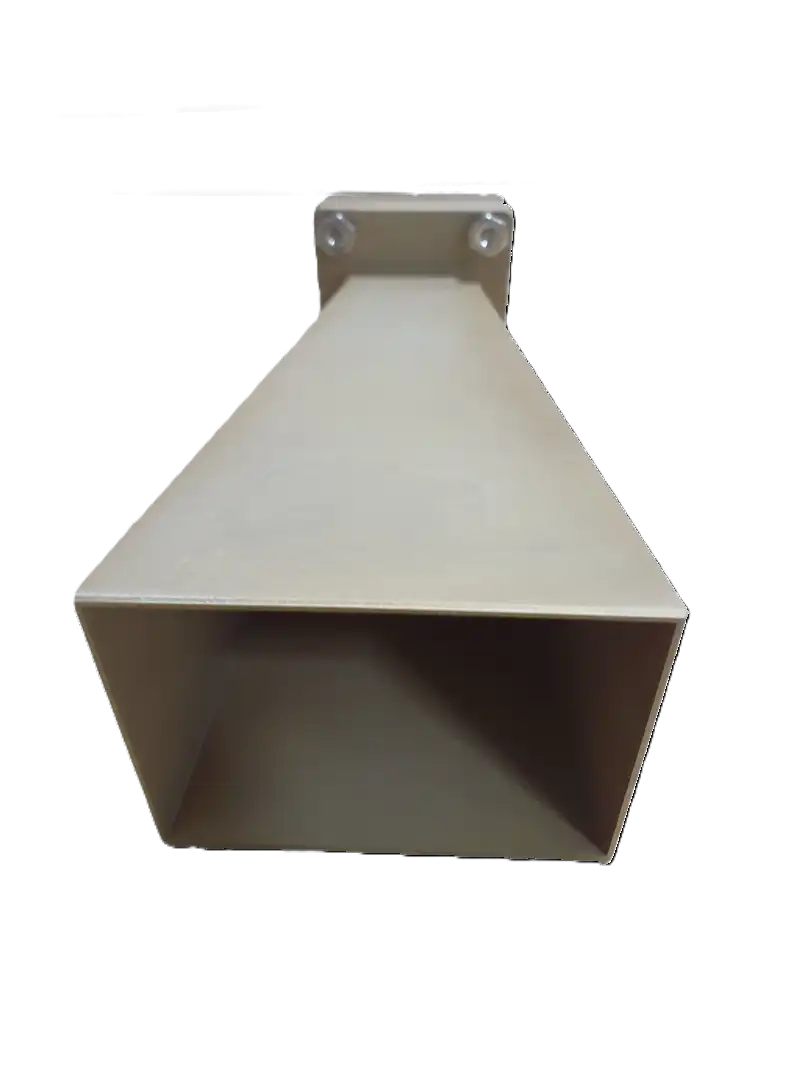
Broad Frequency Coverage for Versatile Applications
One of the most compelling advantages of the Standard Horn Antenna lies in its exceptional frequency range spanning from 1 GHz to 110 GHz. This broad coverage eliminates the need for multiple specialized antennas, streamlining laboratory equipment inventories and reducing capital expenditures. Engineers can seamlessly transition between testing different device types—from cellular base stations operating in sub-6 GHz bands to millimeter-wave radar systems functioning at 77 GHz—using the same reliable antenna platform. The waveguide input styles available (WR770-WR3 for standard configurations) ensure compatibility with existing test equipment, while built-in coaxial input options (R2300-R28) provide flexibility for integrated measurement systems. The practical implications of this broadband compatibility extend beyond mere convenience. In satellite communications testing, where ground stations must handle multiple frequency bands simultaneously, the Standard Horn Antenna enables engineers to validate both uplink and downlink performance without equipment changes. For aerospace and defense applications, where radar systems operate across X-band, Ku-band, and Ka-band frequencies, having a single antenna solution that maintains consistent performance characteristics simplifies calibration procedures and ensures measurement repeatability. The antenna's VSWR specifications (≤1.25 for waveguide configurations and ≤1.5 for coaxial styles) guarantee minimal signal reflection, which translates to more accurate power measurements and reduced measurement uncertainty in critical test scenarios.
Enhanced Measurement Accuracy Through Superior Design
Optimized Radiation Patterns and Gain Characteristics
The Standard Horn Antenna delivers exceptional measurement accuracy through its precision-engineered radiation patterns and carefully calibrated gain characteristics. With gain options ranging from 10 dB to 25 dB, laboratories can select the optimal configuration for their specific testing requirements. Lower gain antennas (10-15 dB) provide wider beamwidths suitable for general-purpose measurements and broader spatial coverage, while higher gain options (20-25 dB) offer increased directivity essential for long-range measurements and interference-minimized testing environments. This gain flexibility, combined with linear or circular polarization options, ensures the Standard Horn Antenna adapts to diverse measurement scenarios without compromising signal fidelity. The antenna's optimized structure minimizes transmission loss, ensuring stable and reliable signal performance across its entire operational bandwidth. This high efficiency becomes particularly critical when conducting far-field antenna measurements in large anechoic chambers or darkrooms, where even minor signal degradation can significantly impact measurement accuracy. The flared waveguide geometry creates smooth impedance transitions that reduce standing waves and minimize reflections, resulting in cleaner radiation patterns with reduced side lobes and back lobes. For engineers performing antenna gain measurements, pattern cuts, or cross-polarization discrimination tests, these characteristics translate directly to higher measurement confidence and reduced calibration time.
Durability and Long-Term Reliability in Demanding Environments
Professional RF test laboratories demand equipment that withstands continuous operation under varying environmental conditions. The Standard Horn Antenna excels in this regard through its robust construction using aluminum alloy or brass materials, selected specifically for their excellent electrical properties and mechanical durability. The corrosion-resistant coating applied during manufacturing protects against oxidation and environmental degradation, ensuring consistent performance even in laboratories with challenging climate control or in field deployment scenarios. This durability proves particularly valuable for defense contractors and research institutions conducting outdoor range testing, where antennas face exposure to temperature fluctuations, humidity, and other environmental stressors. The lightweight construction of the Standard Horn Antenna—despite its robust materials—facilitates easy positioning and reconfiguration during measurement campaigns. Engineers conducting antenna pattern measurements often need to reposition equipment multiple times to capture complete radiation patterns across different azimuth and elevation angles. The antenna's manageable weight reduces physical strain and enables faster test setup modifications, improving overall laboratory productivity. Combined with the meticulous engineering that meets strict industry standards, every Standard Horn Antenna unit undergoes rigorous testing using state-of-the-art measurement equipment to verify radiation patterns, VSWR characteristics, and gain specifications before delivery. This quality assurance process ensures unmatched reliability and performance in real-world applications, giving engineers confidence that their measurement results reflect actual device performance rather than antenna limitations.
Seamless Integration and Customization Options
Multiple Connector Types and Mounting Configurations
The Standard Horn Antenna's design philosophy emphasizes compatibility and ease of integration with existing test infrastructure. Available connector types include SMA, N-Type, and custom options, accommodating the diverse interface requirements found in modern RF test laboratories. SMA connectors suit applications up to 18 GHz, providing reliable performance for many commercial and defense testing scenarios. N-Type connectors extend usability to higher frequencies while maintaining excellent mechanical stability and repeatability—crucial factors when conducting measurement campaigns requiring multiple connect-disconnect cycles. For specialized applications requiring unique interface configurations, custom connector options ensure the Standard Horn Antenna integrates seamlessly into proprietary test systems or legacy equipment setups. The antenna's physical mounting provisions accommodate standard laboratory positioning equipment, from manual positioners to sophisticated multi-axis positioning systems found in advanced antenna measurement facilities. This compatibility ensures smooth integration into various infrastructures, minimizing setup complexity and reducing the time between equipment acquisition and productive testing. Whether mounting the Standard Horn Antenna on a fixed test range, installing it in a compact anechoic chamber, or incorporating it into a mobile measurement vehicle, engineers find the installation process straightforward and the operational reliability exceptional. The standardized dimensions and mounting patterns mean laboratories can interchange antennas between different test configurations without requiring custom fixtures or adapters, further enhancing operational flexibility.
Tailored Solutions Through OEM Services
Advanced Microwave Technologies Co., Ltd. recognizes that standardized products don't always address unique testing requirements or specialized applications. The company's OEM services provide tailored solutions meeting specific needs, including custom frequency ranges optimized for particular testing scenarios, modified dimensions accommodating space-constrained environments, and special coatings enhancing durability in extreme conditions. Expert technical consultation ensures optimal integration with existing measurement systems, helping engineers maximize the Standard Horn Antenna's capabilities while addressing application-specific challenges. This customization capability proves particularly valuable for research institutions developing next-generation communication technologies or defense contractors working on classified projects with unique specifications. The OEM process begins with detailed technical discussions to understand customer requirements, followed by rapid prototyping that enables testing and evaluation before full-scale production. This approach minimizes development risks and ensures the final product precisely meets performance expectations. Throughout the customization process, Advanced Microwave's experienced engineering team provides in-depth technical assistance, including electromagnetic simulation support, mechanical design consultation, and measurement validation guidance. The company's quick turnaround times for both prototypes and production units help customers maintain aggressive project schedules without sacrificing quality or performance. For laboratories requiring multiple antenna configurations or organizations standardizing on specific technical parameters across multiple facilities, OEM services deliver consistent, high-quality solutions backed by over 20 years of microwave manufacturing expertise.

Supporting Critical Applications Across Multiple Industries
The Standard Horn Antenna's versatility and performance make it indispensable across numerous high-stakes applications. In satellite communications, ground stations rely on these antennas for precise signal transmission and reception, ensuring reliable connectivity for data relay, television broadcasting, and global positioning services. The antenna's ability to maintain stable radiation patterns across wide bandwidths guarantees consistent link performance even as satellite transponder frequencies shift or atmospheric conditions vary. For aerospace and defense sectors, the Standard Horn Antenna plays crucial roles in radar system development, navigation equipment testing, and electronic warfare applications. Military surveillance systems depend on the antenna's exceptional radiation pattern purity to detect threats accurately and distinguish legitimate targets from clutter, capabilities that directly impact mission success and personnel safety. Telecommunication companies developing 5G infrastructure and planning for future 6G networks utilize Standard Horn Antennas extensively during base station development, beam-forming algorithm validation, and coverage prediction measurements. The antenna's broadband compatibility supports testing across all allocated 5G spectrum bands, from sub-6 GHz frequency range 1 to millimeter-wave frequency range 2 allocations. In academic research environments, universities and research laboratories conducting electromagnetic studies, antenna design research, and propagation measurements find the Standard Horn Antenna an invaluable tool. Its well-characterized performance provides reliable reference measurements against which experimental antennas and novel designs can be evaluated. The antenna's ability to handle high power levels safely and its excellent phase linearity make it suitable for advanced measurements including time-domain analysis, vector network analyzer calibrations, and radar cross-section studies that push the boundaries of current electromagnetic knowledge.
Conclusion
The Standard Horn Antenna delivers unmatched value for RF test laboratories through its broad frequency coverage, exceptional measurement accuracy, robust construction, seamless integration capabilities, and versatile application support. These five key benefits combine to create a reliable, high-performance testing solution that meets the demanding requirements of modern electromagnetic measurements while providing long-term operational value.
Cooperate with Advanced Microwave Technologies Co., Ltd.
Advanced Microwave Technologies Co., Ltd. stands as a premier China Standard Horn Antenna manufacturer with over 20 years of specialized experience in microwave products. As a trusted China Standard Horn Antenna supplier and China Standard Horn Antenna factory, we offer High Quality Standard Horn Antenna solutions with competitive Standard Horn Antenna price points. Our China Standard Horn Antenna wholesale programs and Standard Horn Antenna for sale options serve global clients across satellite communications, defense, aerospace, and telecommunications sectors. Equipped with ISO 9001:2015, ISO 14001:2015, and ISO 45001:2018 certifications, our 24m Microwave Darkroom enables testing from 0.5-110 GHz with unmatched precision. We provide complete OEM services including custom frequency ranges, special coatings, rapid prototyping, and expert technical support. Contact our team at craig@admicrowave.com today to discuss your specific Standard Horn Antenna requirements and discover how our perfect supply chain system, professional R&D capabilities, fast delivery, and strong after-sales support can enhance your RF testing capabilities.
References
1. Balanis, Constantine A. "Antenna Theory: Analysis and Design." Fourth Edition. John Wiley & Sons, 2016.
2. Kraus, John D. and Marhefka, Ronald J. "Antennas: For All Applications." Third Edition. McGraw-Hill Education, 2002.
3. Stutzman, Warren L. and Thiele, Gary A. "Antenna Theory and Design." Third Edition. John Wiley & Sons, 2012.
4. Silver, Samuel. "Microwave Antenna Theory and Design." MIT Radiation Laboratory Series Volume 12. Institution of Engineering and Technology, 1949.
YOU MAY LIKE
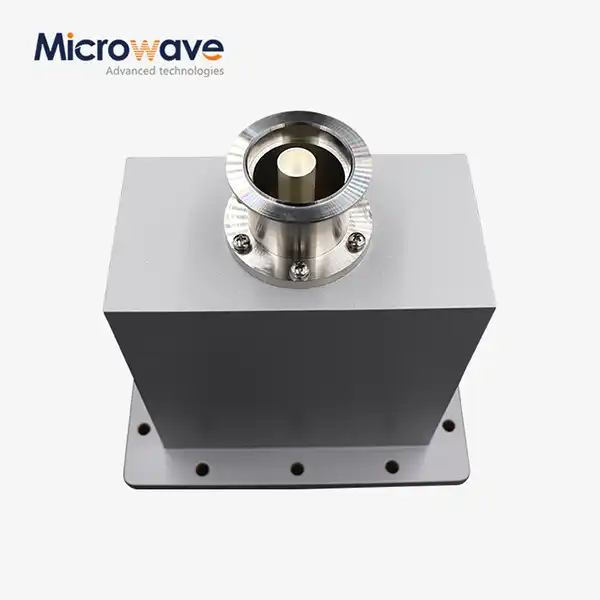 VIEW MOREEnd Launch Waveguide to Coaxial Adapter
VIEW MOREEnd Launch Waveguide to Coaxial Adapter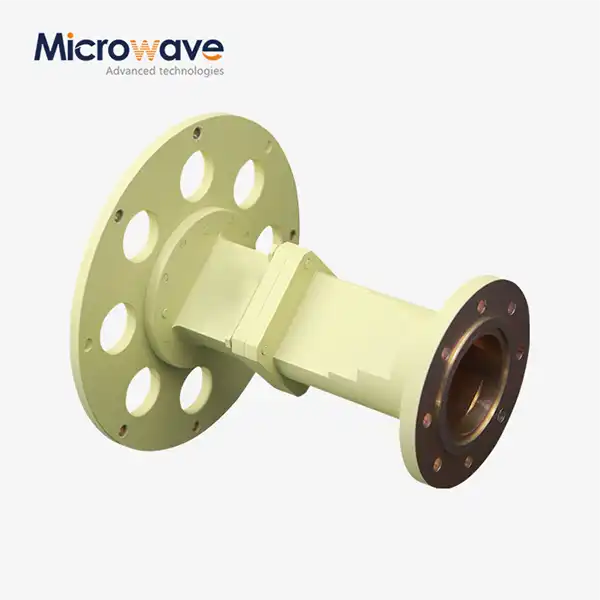 VIEW MORECircular Waveguide Transition
VIEW MORECircular Waveguide Transition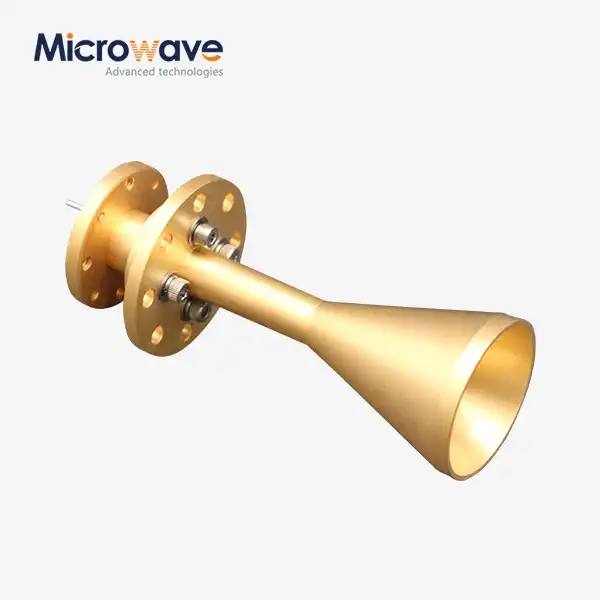 VIEW MOREConical Circular Polarization Horn Antenna
VIEW MOREConical Circular Polarization Horn Antenna VIEW MORELadder Membrane Square Dual Circular Polarization Horn Antenna
VIEW MORELadder Membrane Square Dual Circular Polarization Horn Antenna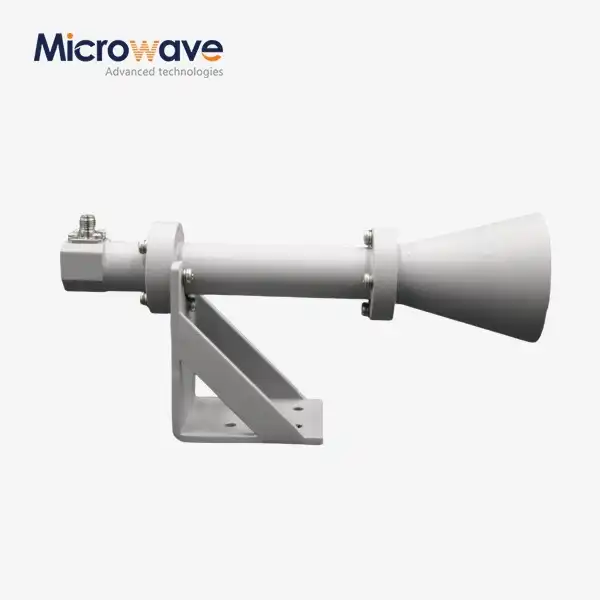 VIEW MOREDual Linear Broadband Circular Polarization Horn Antenna
VIEW MOREDual Linear Broadband Circular Polarization Horn Antenna VIEW MOREPyramidal Linear Polarization Horn Antenna
VIEW MOREPyramidal Linear Polarization Horn Antenna VIEW MORELow Side Lobe Diagonal Linear Polarization Horn Antenna
VIEW MORELow Side Lobe Diagonal Linear Polarization Horn Antenna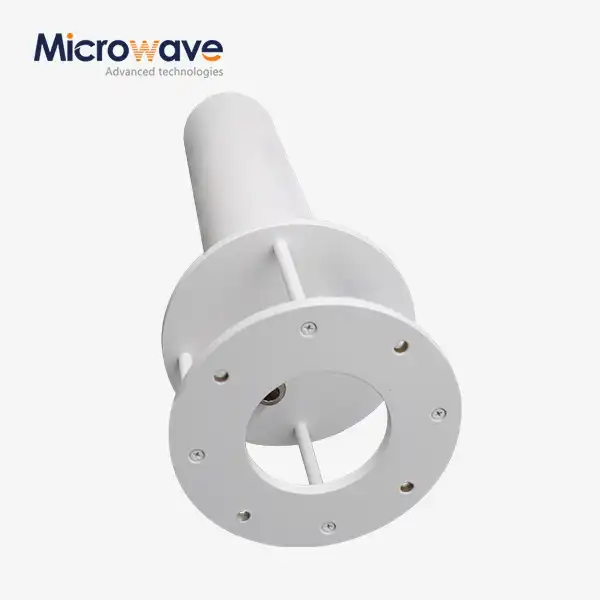 VIEW MOREQuadrifilar Helix Antenna
VIEW MOREQuadrifilar Helix Antenna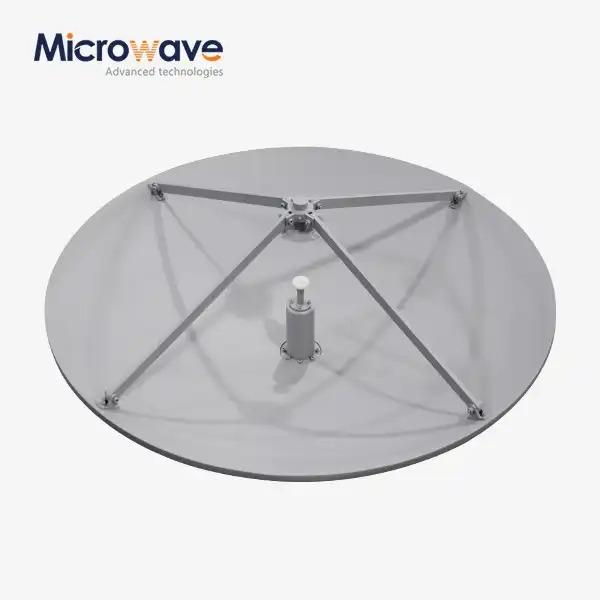 VIEW MORECassegrain Antenna
VIEW MORECassegrain Antenna




